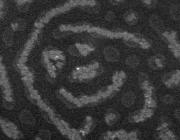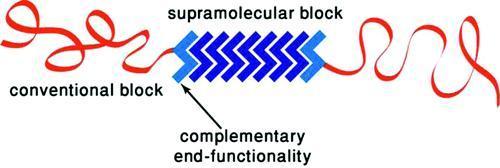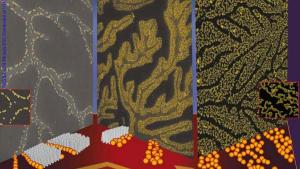Citation:
Date Published:
DEC 27Abstract:
A family of block copolymers featuring dynamically controlled compositions is presented. These copolymers, termed quasi-block copolymers'' (q-BCP), consist of a supramolecular polymer as one of the blocks. A conventional polymer end-capped with a functionality that is complementary to the supramolecular monomer is used to terminate the supramolecular block, giving rise to a block copolymer architecture. In this work we have utilized N,N'-2,4-bis((2-ethylhexyl)ureido)toluene (EHUT) as the supramolecular monomer and employed two types of modified 2,4-bis(ureido)toluene polystyrenes as the end-functionalized conventional polymer. Solution viscosity measurements with different solvent compositions and DSC analysis of poly(EHUT)/functionalized-PS blends provide compelling evidence for the formation of self-assembled q-BCP structures both in solution and in the melt. The qualitative role of chain stoppers on the molecular weight distribution is studied by simulations.





